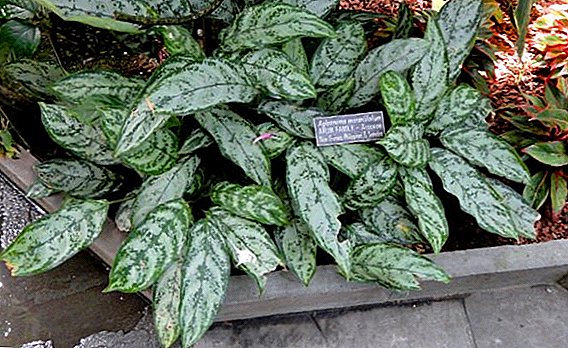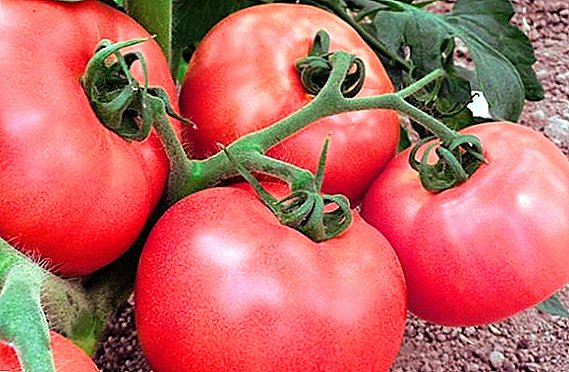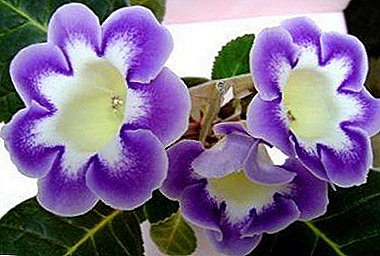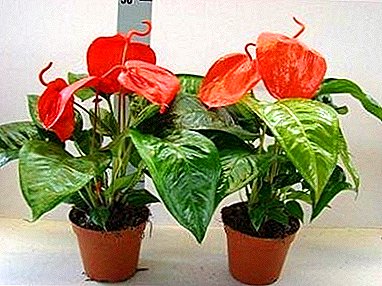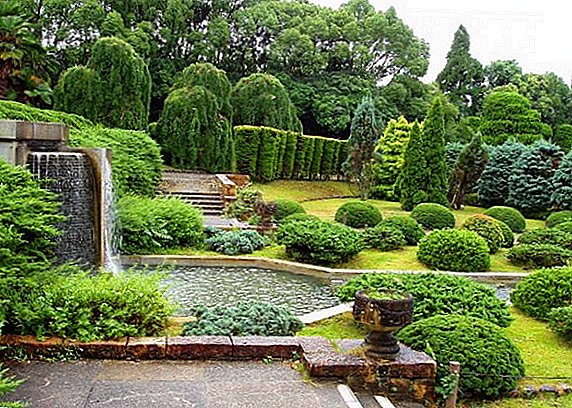 Landscape design is both an art and a focused process. A well-designed home landscape is aesthetically pleasing and functional, creates a comfortable outdoor space, improves the surroundings, and can also reduce the cost of heating and cooling the house. The planning process of the dacha design, one of the most important aspects of home improvement, is often ignored. As a result, we see overcrowded and overgrown plantations, trees and shrubs, located too close to buildings, a lot of plants of the same species. How to create a correct and convenient landscape of a site, having understood with styles, planning, gardening and decorative elements, we will consider in article.
Landscape design is both an art and a focused process. A well-designed home landscape is aesthetically pleasing and functional, creates a comfortable outdoor space, improves the surroundings, and can also reduce the cost of heating and cooling the house. The planning process of the dacha design, one of the most important aspects of home improvement, is often ignored. As a result, we see overcrowded and overgrown plantations, trees and shrubs, located too close to buildings, a lot of plants of the same species. How to create a correct and convenient landscape of a site, having understood with styles, planning, gardening and decorative elements, we will consider in article.
Styles
Given its centuries-old history, the art of landscape design has many styles, then we look at the most popular ones.
Classical
Classic landscape design also has a second name: formal gardens. This style is defined by pure geometry, symmetry and sharp lines. It has a long history. When we think of classic garden design, our imagination draws huge estates, but the principles of classic design can be useful in designing a smaller garden.

Today it is not necessary to be a wealthy person to enjoy your garden in a classic style, it is enough to observe its basic principles, namely:
- Simple geometry. Like classical architecture, formal garden design has its roots in the geometry of Greek and Roman architecture. Formal, or classical, gardens tend to emphasize straight lines, right angles and circles.
- Balanced proportions. Proportion is how the size of each part of the garden relates to the whole, it is central to classical architecture and landscape design.
- Design along the axis. In a large part of the classical landscape design, bilateral symmetry is used, in which forms of equal size are located opposite each other at a point or along an axis. This creates a sense of order and gives the design a sense of balance. The axes often end with a focal point (a piece of sculpture or a plant with a sculptural quality), the shape of which contrasts with the straight lines of the design.
- Cohesion. Repeating shapes throughout the garden can help achieve unity of design.
- Good "skeleton". Walls, fences, evergreens, paths are aspects of the garden that you can see all year. They form the structure, or "skeleton" of the garden, of interest even in winter.
Landscape
Landscape style is easier to beat in areas of a large area with thickets of shrubs and trees. But it is possible to try to apply the elements of this style and in a small area. For this you need to use alpine slides, boulders, waterfalls and other elements found in nature. The paths should be made of plates, between which grass will germinate over time, and a shrub should be planted along the edges to give them the appearance of forest paths. The main thing you should strive for when choosing this style is naturalness, smoothness, naturalness.

Country style
It is much more fussy and natural than most other landscape designs. Even if you do not live in the countryside, designing your plot in this style will make you feel that you are in such a place. Saving the site without sculpture and all unnatural should be your goal when choosing this design.

At the country house in a rustic style, it is important to arrange the paths carelessly, as if unintentionally. Paving materials of such paths can be granite sifting, wooden cuts, perforated tiles through which grass and natural stone noticeably penetrates. Neither the lawn nor the front lawn should look well-groomed. Even the grass on them can be very different heights.
It is good if there are many trees that give a good shade, such as oaks, pines, maples. From colorful plants and shrubs should add chamomiles, lilacs, marigolds, pansies, calendula, hydrangeas and dandelions.
And the most important: do not fight with nature. In this style of landscape design some negligence is allowed. If possible, let the moss grow - this adds even more charm to the already perfect rural landscape.
Japanese style
Traditional Japanese gardens are designed for peaceful contemplation. They are largely related to Buddhist, Sinoist, and Taoist philosophy and seek to provide spiritual refuge for visitors. Elements of a Japanese garden imitate or symbolize natural elements. The more natural and harmonious the garden is, the more favorable the contemplation will be.

In Japanese garden design, four main elements are used: rocks, water, plants and decorations. When choosing and placing these elements in your space, it is important to keep in mind the basic principles of Japanese garden design, which include asymmetry, fencing, borrowed scenery, balance and symbolism.
The Japanese garden is evidence of simplicity and purpose. For a successful final result, the simplest option is best suited.
East style
This style of landscape design today - This is a mixture of Moorish and Muslim trends. The central element in this style is the source of water, such as a pond or fountain.

The area allotted for landscape works should be in the form of a square. A very important feature of this style is the presence of lush, fragrant flower beds.
Feel free to use such plants - lemon balm, mint, rose, oregano, carnations, lilies. Fruit trees must also be present.
Exotic
When we present an exotic landscape, we immediately think of tropical countries. Accordingly, this style is characterized by the presence on the site of lush growing vegetation in various color shades, various idols and sculptures on an African theme. Only natural materials are used. Do not forget to pay attention to the plants - they need to be planted in such a way that they merge together and are arranged in tiers. Getting into this garden, you will feel like in the jungle.

Scandinavian
If you love unity with nature, simplicity and brevity, restraint and functionality, then you certainly should pay attention to the Scandinavian style of landscape design. It is perfect for small suburban areas, because the main focus here is on compactness, well-groomed and abundant vegetation. If you wish, you can break a small garden, the main thing is to arrange the beds neatly, strictly in form. Do not forget about garden sculptures: In accordance with this style, various trolls, gnomes and goblins can settle on your site.

Free
Free style of landscape design is also called romantic. There are no conventions and frameworks. The main thing you should strive for is harmony, a sense of romance and peace. Well, if the site will be old shady trees, water, allowed wild plants and the presence of roses is welcome. Pay special attention to the color palette of garden furniture - flashy and bright colors are not relevant here.

English
English landscape style - This is a well-known influence that shifted the priorities of landscape design from formal, symmetrical gardens to a freer, irregular style. The English garden was the ideal of the turn of the century and changed many aspects of the landscape for society. This style was inspired by painting, and its design was influenced by many disciplines, such as history, philosophy and science.

Innovative design of the English style forever changed gardening and influenced many homeowners. In fact, the first English gardens were developed in the early 1700s. The goal was a natural landscape, although it was embellished and romanticized to hide worldly and unattractive parts.
Did you know? One of the largest parks in the world is the English Garden in Munich. Its total area is 4.17 km², and its length is approximately 5.5 km.
For many people, the term "English garden" is synonymous with traditional garden design. Its starting point can be called a large lawn and majestic trees. Lush green - A key feature of this style.
General characteristics of the English garden:
- Lake. There was always a lake in English gardens - most of them were artificial, but they all imitated real water bodies.
- Trees - they were scattered throughout the landscape with paths that allowed garden visitors to wander through the grove.
- Sculpture - it uses natural motifs that do not violate the naturalness of the landscape.
- Grottoes - used as romantic shelters. They were artificial, but built to resemble a natural cave.




One of the hallmarks of English landscape design is departure from rigid geometric garden beds to serpentine forms.
Plot allocation and layout
Having decided on the style of your garden, you should pay attention to its layout, zoning and lighting in order to choose the most successful placement of all small architectural forms and plants.

Layout
There are several types of layouts: rectangular, round, diagonal, free. The simplest successful type for beginner gardeners is a rectangular planning type. All styles are applicable to him and it is easiest to beat him. It is advisable to use the round type on square-shaped areas, giving rounded outlines to lawns, ponds and flowerbeds.

If you want to visually expand the space, then the diagonal type will suit you. Free planning, despite the apparent simplicity, is the most difficult, because you need to have a sense of proportion.
You will be interested to learn about crafts and garden sculptures, namely: a flower garden of wheel tires or stones, wattle fence, gabions, rock arias, ladybugs, garden fencing, solar wax refinery, brazier.
Zoning
To give the site more decorated and finished look, you need to pay attention to competent zoning. With it, you can put the necessary accents on your site. Zones can be parsed using paths, hedges, height differences, arches and even color.

Lighting
One of the important elements of landscape design is lighting. Using a properly designed lighting system can not only achieve the desired atmosphere at the dacha, but, more importantly, feel more comfortable. Accordingly, there are two types of landscape lighting: functional and decorative. The first is necessary for us for convenience, the second - to create an atmosphere.

When choosing lighting do not forget about the quality of materials because the lamps will be in an aggressive environment for them: they will be affected by the sun, moisture and frost.
Landscaping plot
There is a huge number of types of gardening of the summer cottage, below we consider the most popular and interesting ones.

Alpine Hill
Today the Alpine hill is extremely popular type of a bed and is capable to decorate a garden of any style, a form and the size. It imitates the alpine slope, and you can place it on any terrain, although, of course, the object will look better on a hilly one.
We recommend to read how to design an alpine slide and arrange it with the help of such colors as: edelweiss, stonecrop, young, juniper, crocus, phyllose awl, aquilegia, Japanese spirea, aster alpine, viol horned.
Do not forget that the alpine slide is valued more for the beauty of stones, not plants. Choose stones with an interesting structure, but similar to each other.

Do not forget about the size of your site: in a small area you should not place large boulders, as too small stones will not look on a large area. Plants should be selected unpretentious, perennial and compatible.
Important! When making an alpine slide you should not pick tall plants: the height should not exceed one and a half meters.
Grass lawn and flower bed
Lawn and flower bed at the dacha - one of the best decorations. Whatever the style of landscape design you choose, in any case, you will have to pay attention to these elements of the garden. Variations of flowerbeds design a huge number, most importantly - they must fit into the overall concept. You can use the tools at hand, for example, such as old cans, pots, baskets and even baths and bicycles, and get beautiful and original flower beds.

Also do not forget about the design of the lawn, because it is not only grass that you need to cut from time to time: with its help you can select certain areas and emphasize the geometry of the site.
Trees and shrubs
Trees and shrubs are an important part of gardening. Adding them to your landscape, whether single or multiple, will greatly improve the appearance and value of your site. Trees can create shade ideal for a bench or table. Shrubs can block the winds and protect from alien views.

One of the biggest mistakes in landscape design is the wrong choice and placement. At a minimum, you should consider the size of a mature plant and the peculiarities of its root system, because too high a plant can damage power lines, and the root system can damage underground utilities. In addition, when choosing a place for trees or shrubs, they should be positioned so that they do not compete for light and nutrients from the soil.
Important! Trees should be planted not less than 5 meters from the walls of buildings and not less than 1.5 meters from underground utilities. Shrub, respectively, - not less than 1.5 meters and not less than 1 meter.
Well, forget about the chosen style and the overall concept of the garden is also not worth it. Today there is a huge selection of ornamental and fruit shrubs and trees. Try to choose those that most harmoniously fit into the style of landscape design of your site.
Vertical gardening
If you want to improve a small dacha, protect it from dust or zoning the garden, then pay attention to vertical gardening. It is not only a variety of hedges, lianas that surround buildings or arches, but also vertical gardens. The latter can be created with the help of various containers of various designs. Moreover, if the overall concept of landscape design allows, you can create vertical beds.

Flower garden
Before you break the flower garden, sketch out a plan for planting flowers, and also pay special attention to the form - It should be consistent with the overall style of landscape design.

When creating a flower bed you should not strive for strict symmetry, it is better to plant the plants in a bouquet. Consider the combination of not only the types of colors, but also their color range to achieve the most harmonious result.
Did you know? Keukenhof - the largest flower garden in the world, located in the Netherlands. About 7 million flower bulbs are planted annually in the park, which covers an area of 32 hectares.
Hedges and fences
The hedge will decorate any site and give it a presentable look, moreover, it will save you from wind, snow, dust and heat. Before planting, select the appropriate plants, analyze the width and height you want to get a fence, how much time to devote to care.

It is best to choose evergreen shrubs that will delight you all year round, but, unfortunately, the choice of such plants is not too large: heather, lingonberry, juniper, spruce and pine. When choosing such plants you need to be patient, because at first such a fence will look ridiculous and only after a few years will it be able to perform its functions. If you need to solve decorative problems quickly, then you should pay attention to the same-sized plants. For lovers of active flowering fit climbing plants, the choice of which is quite wide.
Для формировки живой изгороди, часто используют дерен, барбарис Турнберга, тую, спирею, сирень, иргу, шиповник, пузыреплодник, черноплодную аронию, самшит, форзицию, бирючину, боярышник.
Садовые декоративные элементы
If you want to focus on the unusual design of your suburban area and highlight some of its areas from the background environment, then you can not do without garden decorative elements.

Reservoirs
In most styles of landscape design is welcomed the presence of a reservoir. It is great if there is a natural reservoir on the site, and then, most likely, the whole design will be based on it to emphasize all the beauty. But if there is none, then you can create an artificial reservoir yourself, but you should carefully examine all the technical details.

If you are the owner of a small suburban area, you better pay attention to the fountains or cascading streams.
Read also how to build a fountain and waterfall in the country with their own hands.
The buildings
Dacha plot is difficult to imagine without all kinds of buildings - These are gazebos, sheds, platforms, arches, greenhouses and even playgrounds: all these elements should not fall out of the picture.

For example, if you have a garden in the Japanese style, an arbor should be built in the same. Show imagination, from ordinary things, such as a greenhouse or a shed, you can make a highlight of your garden.
Read the same way with your own hands to make a veranda, a greenhouse, a greenhouse, a gazebo, garden swings, a pergola, a cellar
Tracks
When gardening suburban area often neglected paths. We plan reservoirs, arbors, flower gardens, but often we forget to think about how to connect all these zones. By ignoring the garden paths, the garden can become fragmented due to lack of forethought, lack of communication.

Not only do the tracks lead people all over your yard, you can also use them to create a mood or atmosphere. When planning the tracks, you should think about what materials they will be, how many of them are needed, how often they will be used, whether they will be covered.
Read also how to make a path from wood cuts by yourself.There is a mass of materials to create tracks, here are some of them: concrete, gravel, stone, brick, mulch. Do not forget that to give a well-groomed look to the tracks of loose elements should be used curbs. Track materials should be optimal for your garden concept.
Sculptures and small architectural forms
Intentionally placed sculpture can transform any garden - the landscape becomes figurative and thoughtful, individual.

Since the silhouette of the garden changes with the seasons and with the passage of time, the sculpture occupies a central place. A well-placed object will enhance the beauty of your garden and reflect your personal style. It can also be presented as an element of surprise - to do this, place it in the "pockets" along the winding path.
Important! Outdoor sculptures must be able to withstand any weather and extreme temperatures — materials such as steel, bronze or stone that meet this requirement.
Summing up, it should be said that there are a huge number of small architectural forms with which we can decorate, place accents or make our site more practical. The main rule you should remember is: everything must be in harmony with each other.
What to consider when planning a landscape design on the site
When you start a landscape project, the first thing to consider is - this is how you want to use space.

General purposes of outdoor use:
- entertaining;
- cooking and dining;
- swimming, sport;
- relax;
- gardening.
Did you know? There is a fountain in Alupka Park "Trilbi", dedicated to the dog family of Mikhail Vorontsov. It depicts a dog clinging to a cat.
Also, when planning to determine the direction of the wind and the light. Then pay attention to the soil. It is important to make sure that it has the right nutrients to support your chosen plant material.
An important factor to consider when choosing plants is your climate zone of residence. It is determined by conditions such as temperature and rainfall.

As soon as you have an idea of which plants you will use, start thinking about their placement depending on the availability of water. If there are certain areas where it is collected, then those plants that require a lot of moisture should be grouped there. On the other hand, if there are certain areas where water drains quickly, it is worthwhile to plant there plants that love dry conditions. This process is often referred to as planting in accordance with hydrozones.
Well, the last thing to think about - This aesthetic appeal and style of your landscape design. Consider the interior and exterior style of the house standing on the plot, and try to create a unity between them and your landscape.
A good landscape design of the summer cottage creates a cozy environment for the owner, saving time, effort, money and benefiting the environment. Strive to make your summer cottage so that it can reflect your personality and help you feel happy and relaxed.
Video: landscape design on your own project
Feedback users network:





